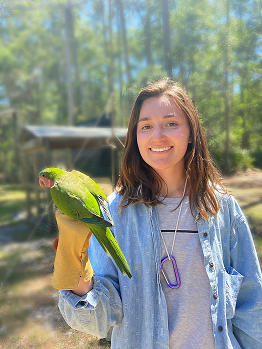Why I study birds
Published:
Being able to identify and appreciate the wildlife around us fundamentally changes our relationship with nature, deepening our sense of wonder and appreciation. Birds, in particular, have a unique ability to spark curiosity about the natural world, serving as an extraordinary gateway to understanding and valuing the environment. I’m grateful for the opportunity to engage with birds not only in my personal life but also academically and professionally. Through these experiences, I’ve had the distinct pleasure of observing and learning about the weird and wonderful behaviors that make them so remarkable.
I think birds are often taken for granted. Birds are everywhere—we share the planet with an estimated 50 billion individuals across 10,000 species (Callaghan et al., 2021). Because they are so common, we sometimes become desensitized to their presence, and they are easily overlooked. Step outside, and it’s impossible not to hear one. I guarantee you would notice their absence. If you didn’t hear birdsong, it would likely feel eerie.
Their abundance gives us a rare and ongoing opportunity to engage with wildlife in a way that few other animals allow. You can set up bird feeders and attract a stunning variety of species or install birdhouses and witness the life cycle of nestlings and fledglings up close. Even simply closing your eyes and listening to birdsong can be a source of comfort and connection. If you take a moment to really observe them and watch their behavior, notice their interactions, or listen to their calls, you might see them in a different light.
Birds possess a remarkable set of traits that make them truly special from their constant vocalizations and highly efficient respiratory system to their hollow bones and ability to engage in (Rattenborg et al., 2016). Some species even display extraordinary behaviors, like bearded vultures consuming bones, vampire ground finches drinking blood, or certain corvids (i.e., jays, magpies, crows) gathering in what resemble funerals (Swift, 2015). But what I find especially fascinating is their social behavior and the cognitive mechanisms that may drive it.
As a globally distributed, diverse, and species-rich clade, birds have been the focus of behavioral ecology research by pioneers like Darwin, Tinbergen, Lorenz, and Carson. Their work laid the foundation for an extensive body of research on animal behavior, providing key insights into animal cognition, or the ability for animals to perceive, process, learn, store, and use information (Shettleworth, 2010). Although we may never know exactly what animals are thinking, we can use manipulative experiments, and observational and comparative studies to infer and theorize what they may know about their social worlds based on their response to problems or stimuli.
Birds, particularly parrots and corvids, display a remarkable range of complex cognitive and social skills on par with primates (Emery, 2005). Some species form life-long pair bonds, cooperative alliances, and reconcile after conflict (Emery et al., 2007) (despite having a completely different brain structure! Clayton & Emery, 2015)) which makes them a fascinating study system.
I highly recommend taking the time to watch your backyard birds and practice identifying species. There are plenty of resources that helped me learn including Thayer birding software and the Cornell Lab Merlin app. I also recommend joining local birding groups! Lastly, if you are considering putting out feeders or birdhouses, please research how to ethically and safely feed and house birds. There are important things to be aware of before you get started like food and feeder quality and the risk of infectious diseases. Here, here, and here are a few resources to get started.

